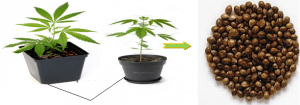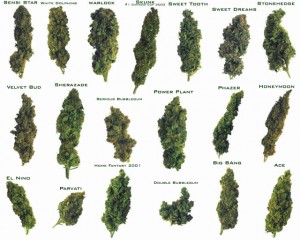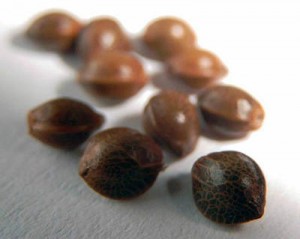
There are several biological processes of sexual propagation in cannabis and the formation of new generations by seed via cannabis breeding. Cannabis is a plant that can be reproduced either sexually or asexually.
The process of asexual propagation is referred to as taking cuttings or cloning. The process of sexual propagation is when male and female sex cells (gametes) unite within the female flowers to form a new, genetically distinct plant.
Cannabis Breeding And Seed Creation

Each seed that is created by sexual propagation contains genes from each of its parents making it genetically unique with a combination of characteristics from each of the parents. Breeders can use sexual reproduction to their advantage by crossing the traits and characteristics of one plant with other strains.
Many crosses benefit the plant by making it more disease and pest-resistant strains through cannabis breeding. Cannabis is a dioecy or dioecious plant group that contains individual plants that are either male or female.
Male plants (staminate) are distinguished by the ‘pollen sacks’ that they create and grow from their branches. Female plants (pistillate) are distinguished by showing two (2) whitish or pink hairs which develop as part of the pistil.
Other plants may be a monoecious plant that exhibits both male staminate and female pistillate flowers, which are referred to as ‘hermaphrodites’ or ‘inter-sex‘ plants. If you are growing a seedless cannabis or sinsemilla then you will want to rip out and throw away any male or hermaphrodite plants so they will not be able to pollinate your crop.
If you are breeding for seeds you will want to leave the males in the crop so they may pollinate the females. Hermaphrodites are not desirable since seeds produced by hermaphrodite plants tend to be hermaphrodite seeds.
Anemophilous Cannabis Plants

Breeding cannabis plants are a species of plant that is anemophilous, which means that it is pollinated by blowing winds. Male plants undergo dehiscence which is the process of shedding pollen and dispersing the pollen into the wind.
The pollen is then swept away by the wind to be carried to a female pistillate to hopefully pollinate a female flower.
Though many plants release pollen into the air the cannabis plant recognizes when the pollen is from a male cannabis plant.
Cannabis plants have evolved recognition systems to ensure only species-specific pollen can pollinate the plant.
If the biochemical signal is correct and the stigma recognizes the male pollen then the pollen grain is then hydrated by a small flow of water from the female pistil and germinates the male pollen.
Once the male pollen has germinated it sends a pollen tube into the stigma and burrows towards the ovule. Once the tube reaches the ovary the genetic material that is carried within the male pollen is delivered to the ovule where it is combined with the genetic material from the female pistillate plant.
This is the process of fertilization of a plant embryo in cannabis breeding. This will then create what is known as the embryo that grows within a seed coat and when are fully mature in four (4) to five (5) weeks then they start to fall off the female plant as well as sprout a new plant to complete cannabis breeding.
Let us know what you think.




Responses